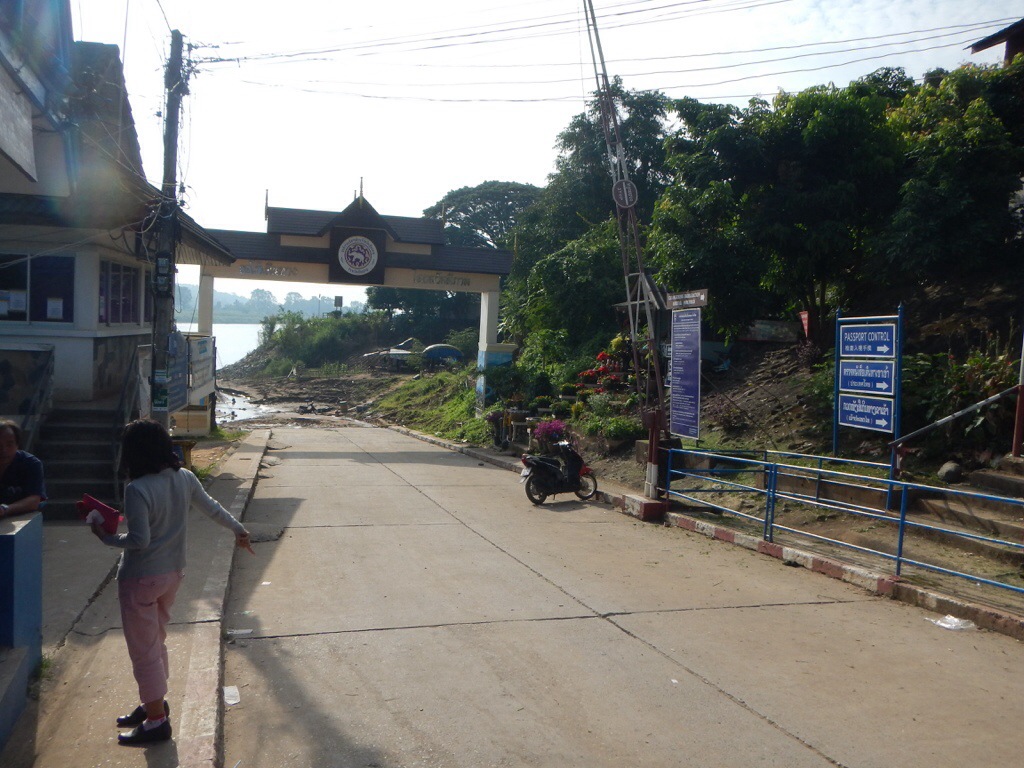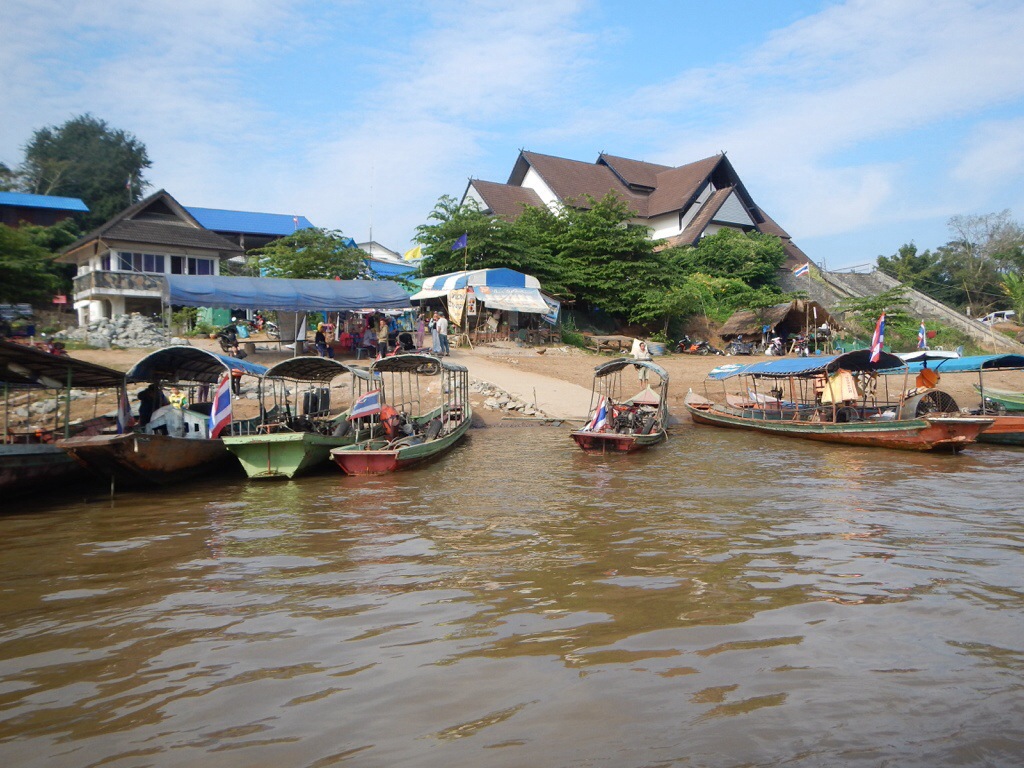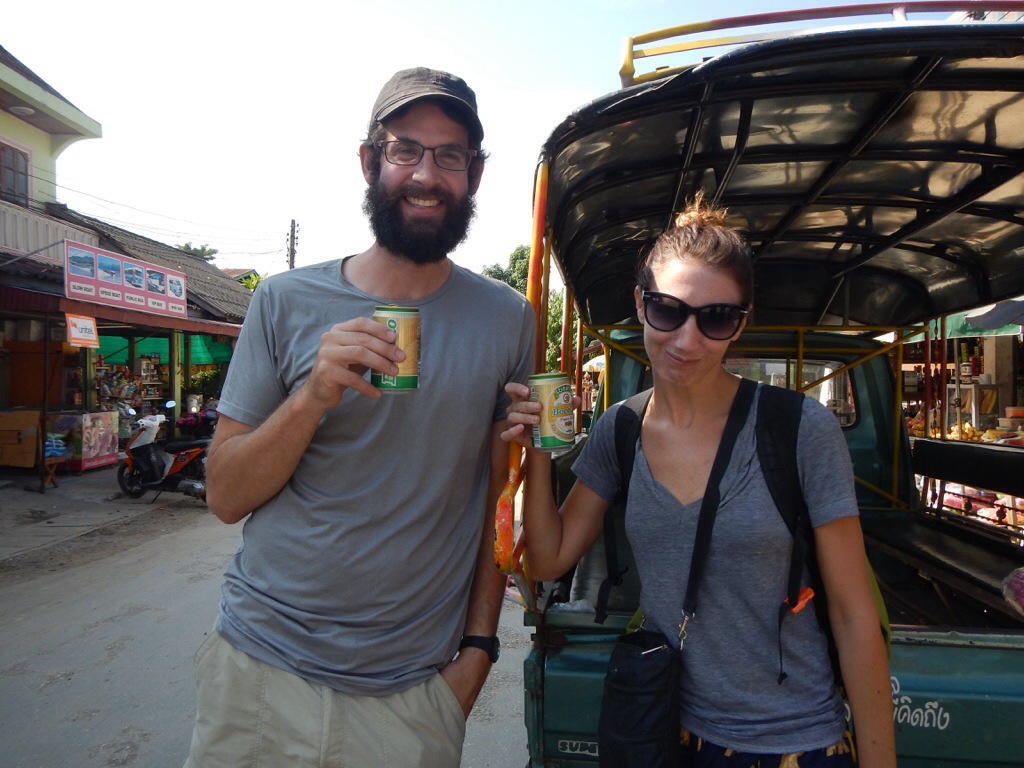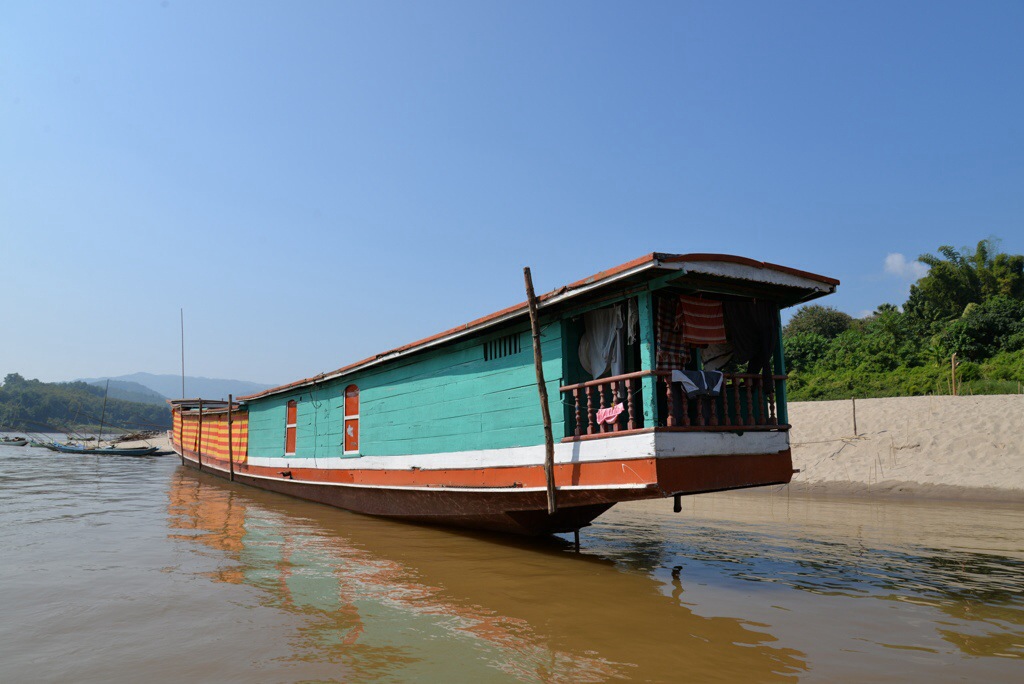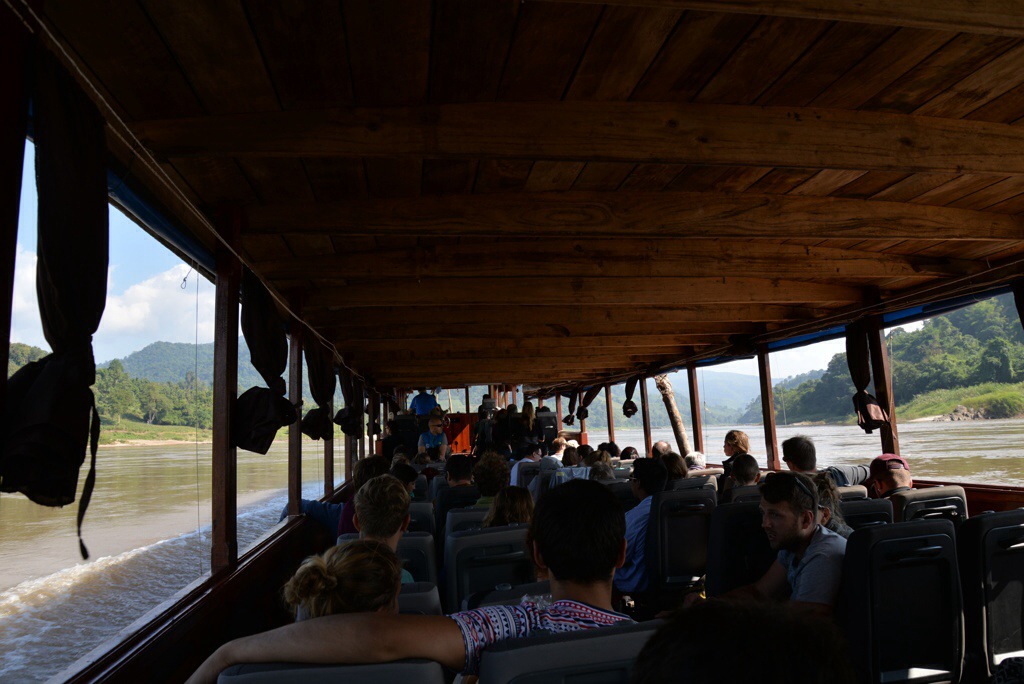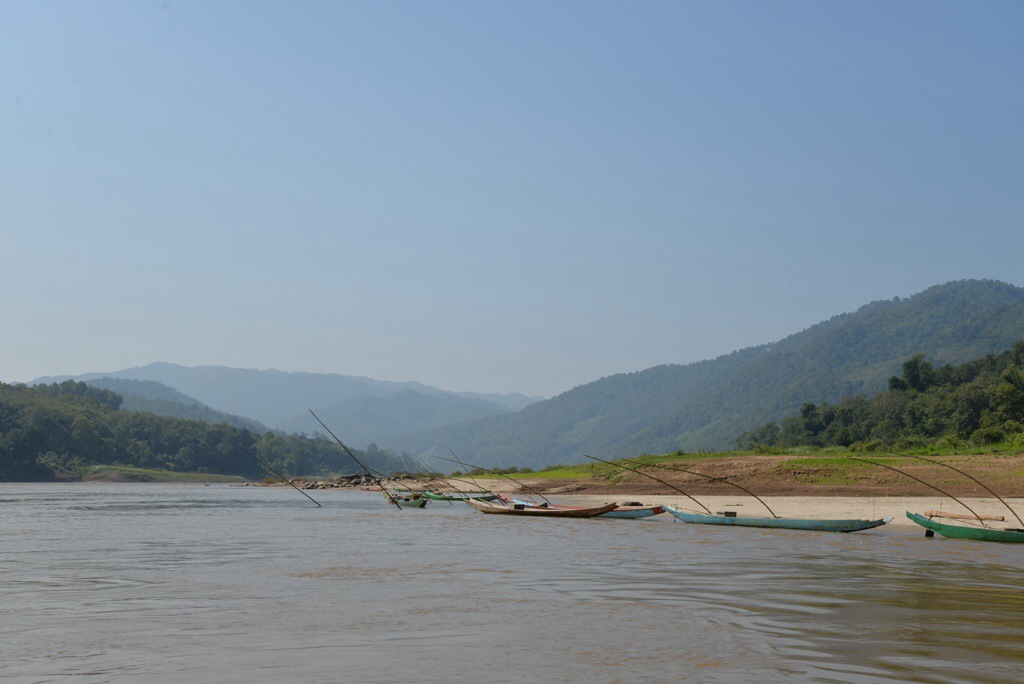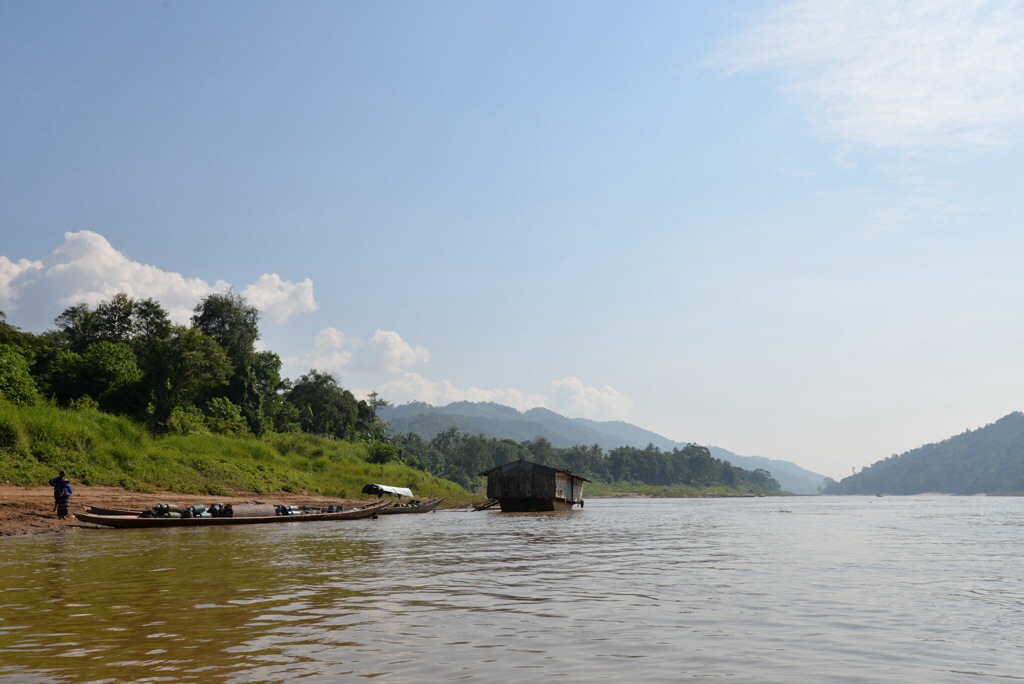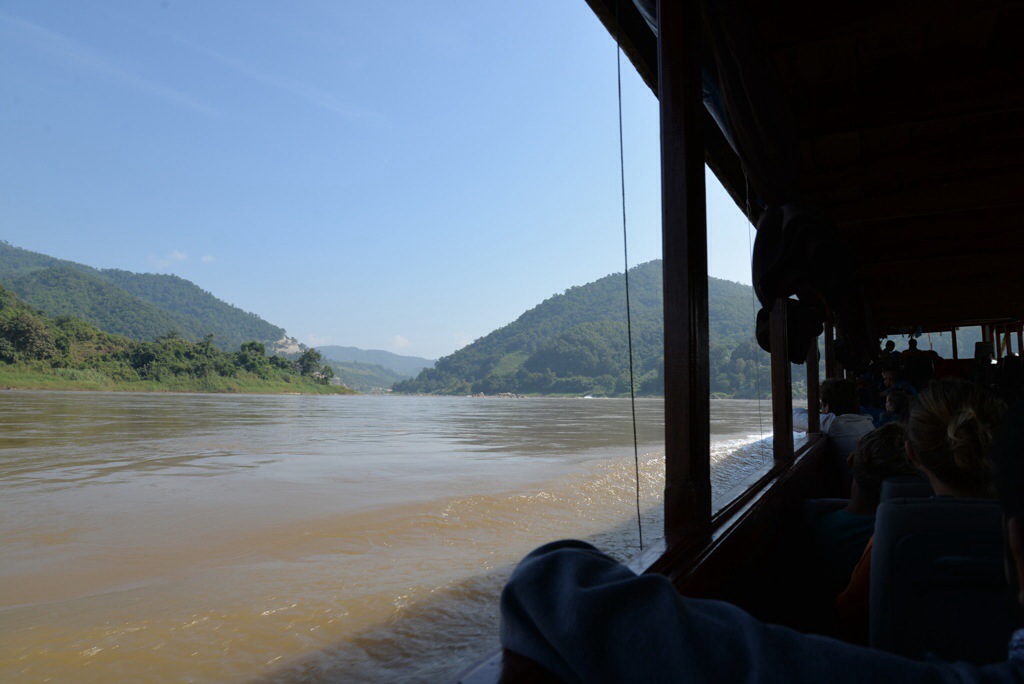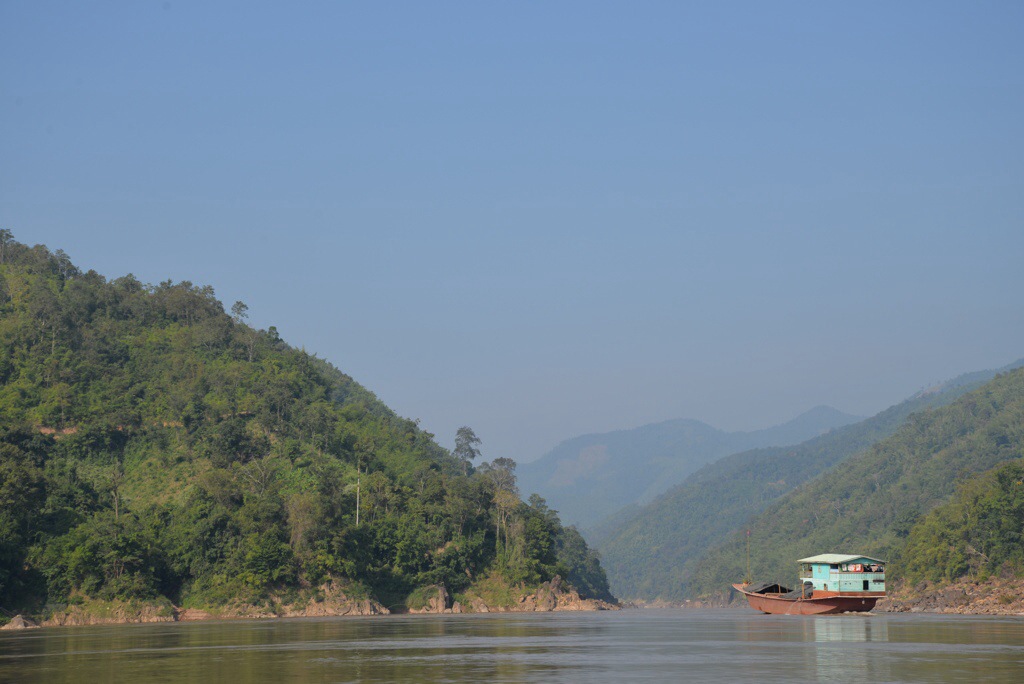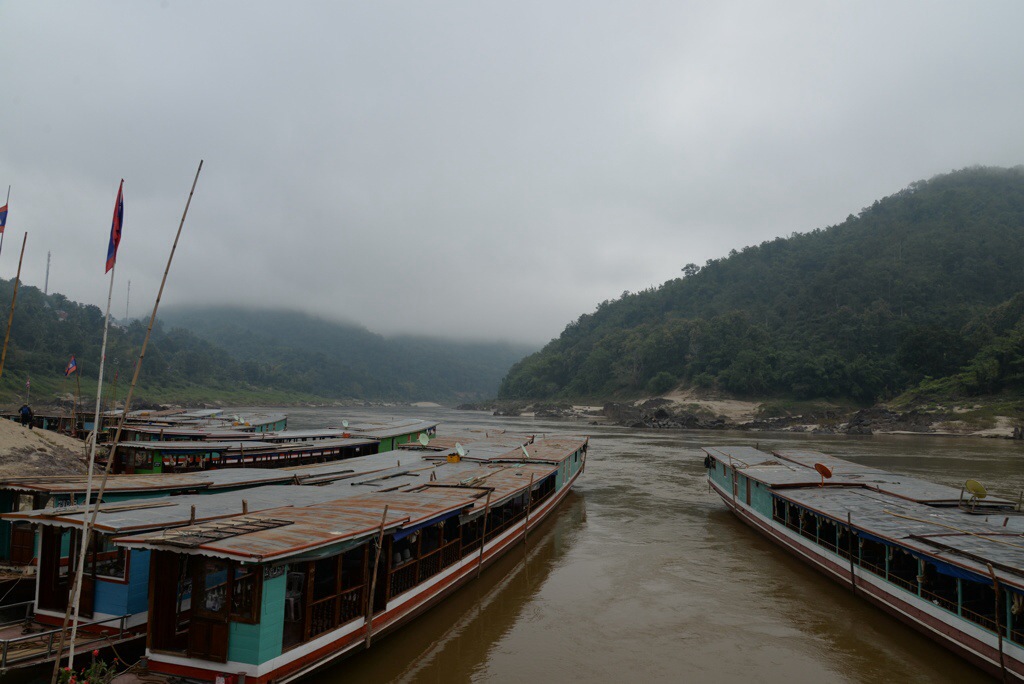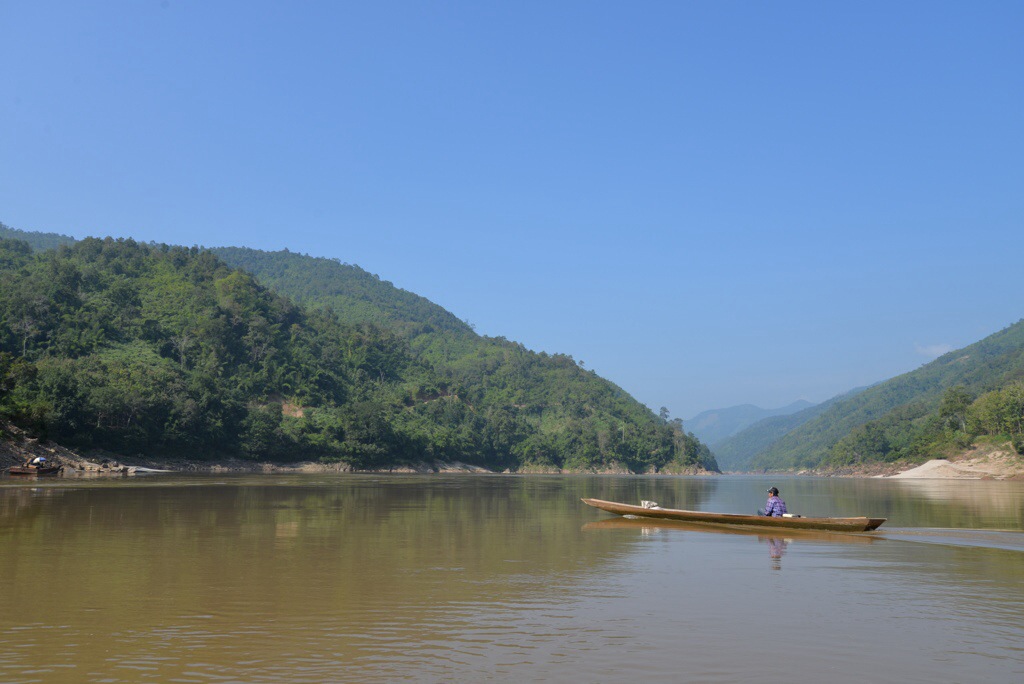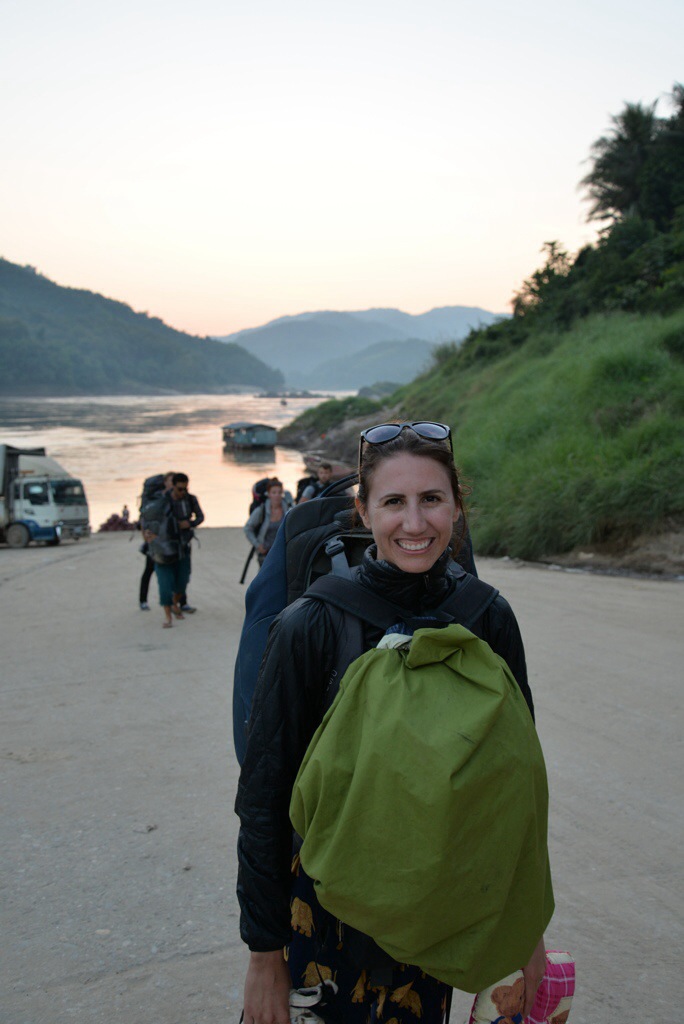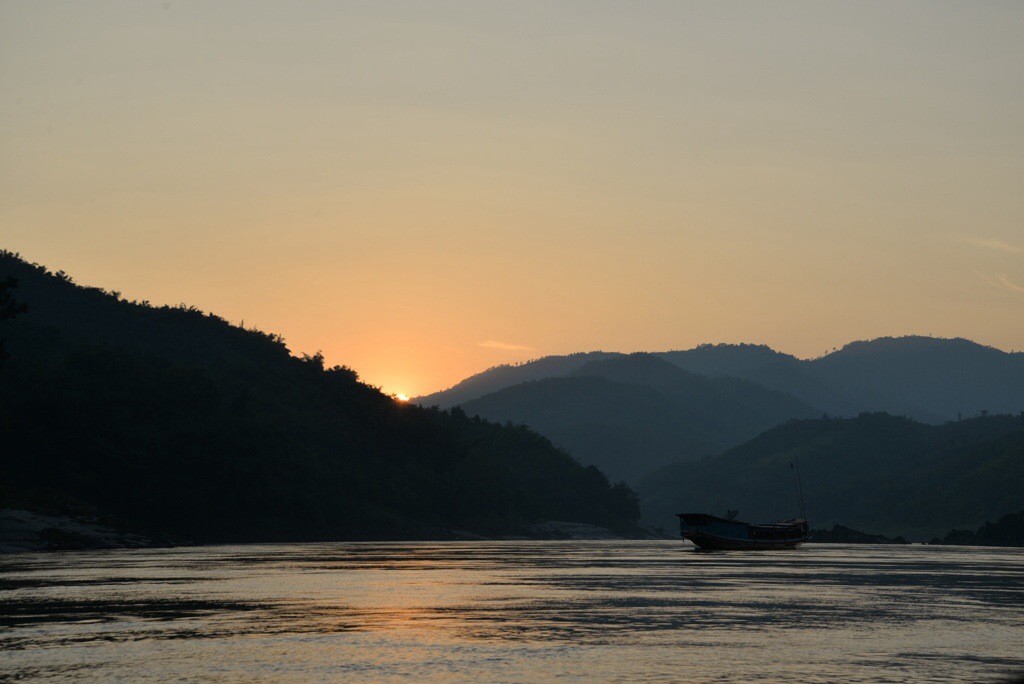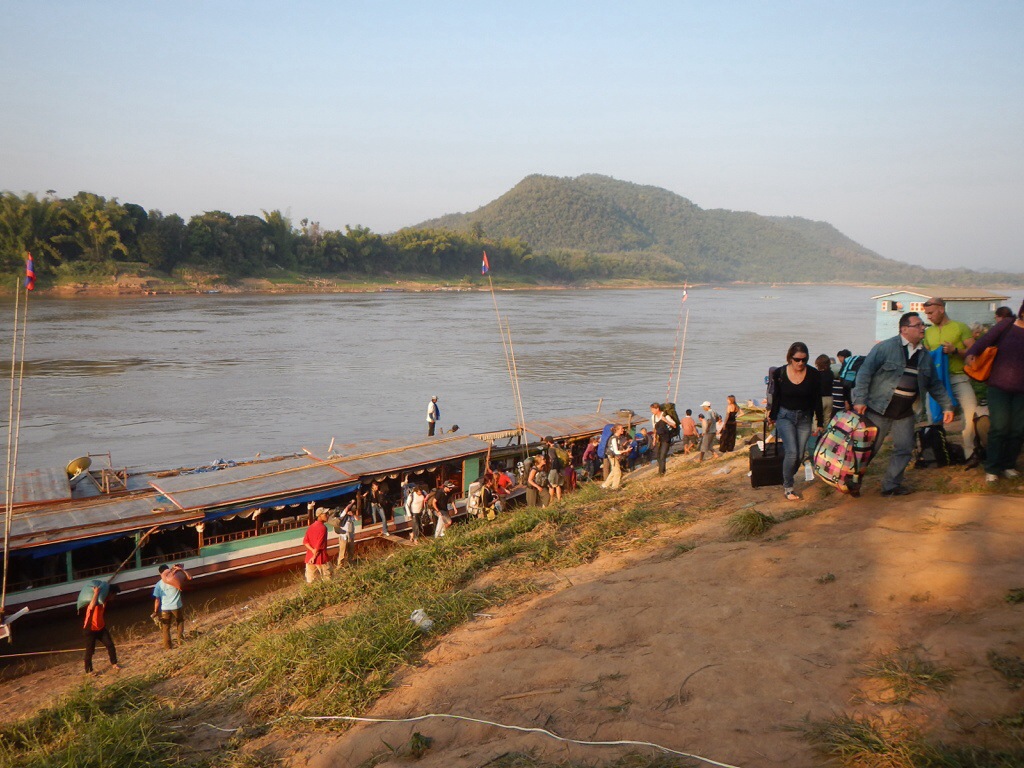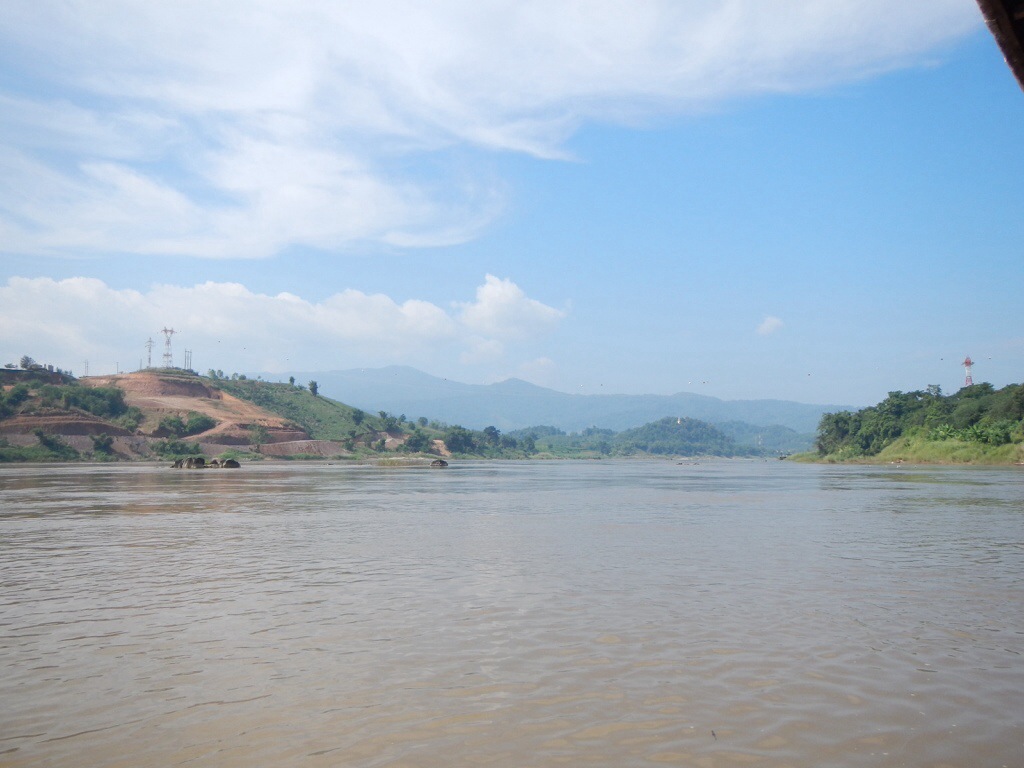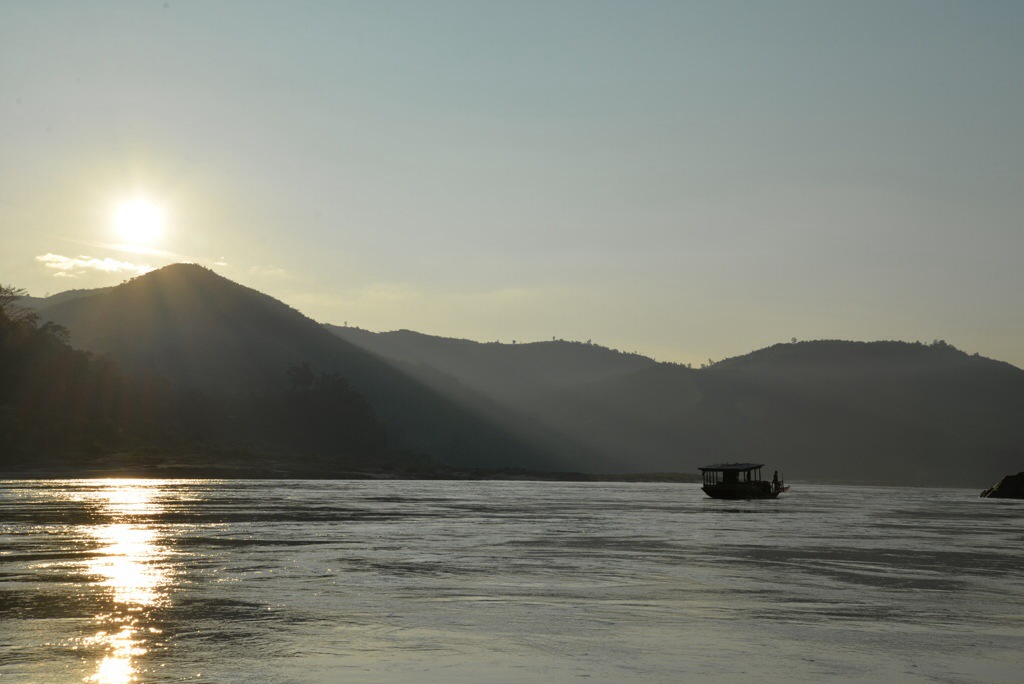Slow Boat to Laos – emphases on the SLOW
We crossed over from Thailand to Laos at Huay Xai, a common border crossing for backpackers on the SE Asia circuit. It’s popular because Huay Xai is the starting point for a two-day slow boat journey down to Luang Prabang. Numerous people had told us that the slow boat was a “must do,” but we found it boring and unnecessary. The interior of the boats is cramped, preventing true relaxation, and the scenery, while beautiful, is nothing compared to the scenery one finds on a trek into Northern Thailand or Laos (which most backpackers also do). Additionally, there is very little “local” traffic on that section of the Mekong, leaving little to look out except the same rolling hills or other boats of tourists. Therefore, it would be our advice that the two days are better spent at the nearby Gibbon Experience, or as extra time in Luang Prabang, an amazing town.
Crossing the Border
The border crossing was jumbled, but without any problems. A van took us to the small boat that ferried us across the river into Laos. Before we left we stopped by Thai customs, a small shack where an official stamped our passports without any question or concern.
Once in Laos, we were guided to a window where we paid for the visa and got our passports stamped without anyone even looking at us. Onto the boat!
The Slow Boat
The slow boats are long wooden boats, common in the northern part of Laos. Some carry cargo up and down the river; others people. While initially travelers would just hitch a ride on a local boat, due to the backpacker demand there are now tourist-only slow boats with nice-ish seats (ours were literally minivan double seats taken out of cars and placed into the boats without any attachment to the floor).
I must first add that we didn’t experience either of the two annoyances we were worried about. From reading over other travelers’ experiences, we were a little concerned that (a) we would be screwed if we didn’t get there early, and (b) we might end up sitting for two days on wooden plank in the engine room. But we booked the boat through a company in Chiang Rai, and there were seats waiting for us on the boat, even through we didn’t get to the boat until 11:30 or noon.
The pace of the boat is certainly slow, which we found at times to be a nice break from our rushing through much of Thailand, although not as nice as the slow pace of Pai. The upper Mekong is not heavily populated, and our boat would often go hours without passing a village. The river itself is wide and muddy; not the prettiest. Rolling hills surround the river providing for a serene setting, but the setting doesn’t change during the two days down the river.
Our boat was completely packed which made it hard to use the free time to relax – seats were close together and there was no room for sprawling out. Our attempts to drink a little on board were thwarted at first by the ridiculous prices of beer on board, and then by the boat running out of beer. If we were part of a larger group that brought its own alcohol on board, the slow boat could have been a fun party.
The coolest part of the journey for me was knowing that not only were we traveling down the river the way the Laos people had for centuries (well, with an engine), but also that the Mekong would be with us for the next two months of our travels, all the way through to Southern Vietnam. The water we were looking at would soon be at the floating markets of the Mekong Delta, as would we.
The slow boat journey takes two days, with an overnight in Pakbeng. It’s a very small town, with little more than small guesthouses for tourists passing through. But it was fun to have a night and dinner in a very local town far from any other outside influences. We chatted with some nice other backpackers we met, and laughed about the ridiculously thin walls between the rooms. They made the supposedly-thin walls of other hotels look like bomb-proof shelters; these things let whispers through and probably would have been more effective as sheets.
Arrival in Luang Prabang
Late in the afternoon of the second day we arrived at Luang Prabang. There was a collective groan of disbelief as we realized that the boat was not going to stop at the town’s port – which was in fine condition – but instead at a port 10 miles upriver, simply to force us to pay tuk tuk drivers to take us into town. Ugh.
Things Might be a ‘Changin
While we would not do the slow boat journey again, and this post might come off a little negative (it’s just the truth!), from talking to locals and other backpackers it sounds like we should appreciate what we got to see, as the scenery may be drastically changing. Throughout Northern Laos we heard about the new high-speed rail line that China is building from China to Vientiane. The line will cross the Mekong over the slow boat route, and stop in Luang Prabang on its way to the capital.
The route, incidentally, is an engineering marvel. But while the main goal of the line is to link Thailand and China (there is already a rail link between Vientiane and Bangkok), everyone seemed convinced that by making it quick and easy to access Vientiane, Luang Prabang, and the Upper Mekong, the rail line will forever change the face of the serene river and scenery we traveled through.

